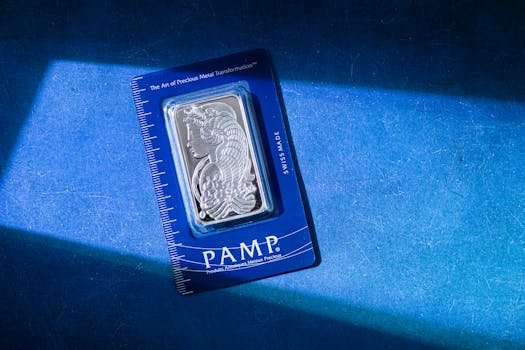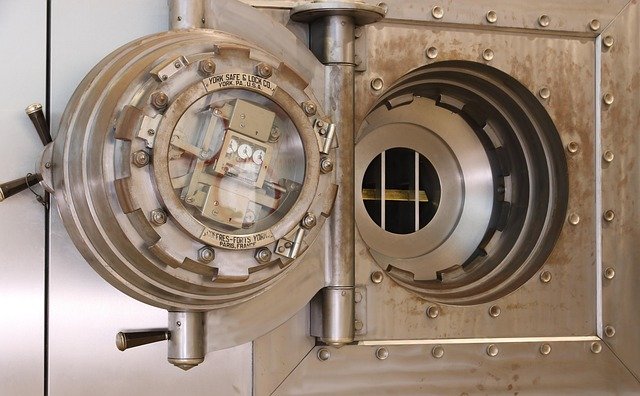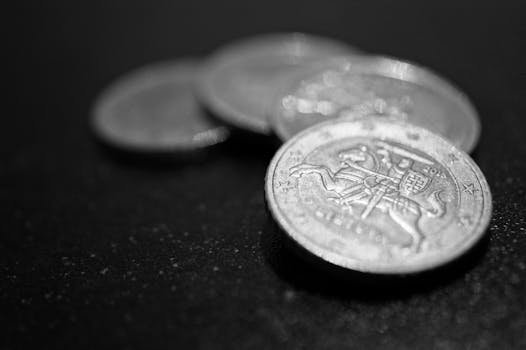1-oz Silver Coin Quick Guide
Three government-minted heavyweights compete for a place in your stack: Canadian Silver Maple Leaf, British Silver Britannia, and Austrian Silver Philharmonic. All are 1-oz, all are globally recognized—but they differ on purity, premiums, security features, VAT implications, and resale behavior. This guide gives you the at-a-glance tables and deeper context to choose confidently—by region, by budget, and by exit strategy.
Introduction: Three government coins, three different value propositions
If you’re buying 1-oz silver for stacking (not collecting), your goal is simple: maximize ounces while preserving liquidity and resale flexibility. Government coins generally cost more than generic rounds or bars, but they sell back faster and often at tighter spreads to spot. Still, not all government coins behave the same.
- Maple Leaf (Canada): famous for .9999 purity and advanced anti-counterfeiting; typically commands a slightly higher retail premium, but also enjoys exceptionally strong global recognition.
- Britannia (UK): .999 fine with multiple security features and a unique UK tax perk: CGT-exempt for UK residents because it’s legal tender. Premiums are competitive, especially in the UK/EU.
- Philharmonic (Austria): .999 fine, euro-denominated, and often the lowest premium across continental Europe; design is classic, security features are more basic, but dealer demand is deep in the EU.
What should drive your choice? Your region, your exit market, and whether the marginal premium buys you anything tangible (faster resale, tighter bids, lower fraud risk). The tables below show the differences that matter for a practical buyer. First time buying? Start with bullion vs numismatic basics.
Quick comparison table
Purity, weight, premium, VAT status, recognition
| Coin | Purity | Weight | Face Value | Typical Retail Premium* | VAT (EU)** | Global Recognition | Security Features |
|---|---|---|---|---|---|---|---|
| Maple Leaf (Canada) | .9999 | 1 troy oz | $5 CAD | ~15–25% over spot | VAT applies (silver) | Excellent worldwide | Radial lines, micro-engraved privy mark, anti-counterfeit tech |
| Britannia (UK) | .999 | 1 troy oz | £2 | ~12–20% over spot | VAT applies (silver) | Excellent UK/EU; very good global | Latent image, micro-text, guilloché/tincture lines |
| Philharmonic (Austria) | .999 | 1 troy oz | €1.50 | ~10–18% over spot | VAT applies (silver) | Excellent EU; good elsewhere | Standardized dimensions; fewer overt features |
* Premiums fluctuate with market conditions, dealer stock, and order size. Model spreads and premium traps before you choose.
** The EU generally does not exempt silver bullion from VAT; margin-scheme sales may exist in some countries/dealers.
At-a-glance decision matrix
| Priority | Best Pick | Why |
|---|---|---|
| Lowest premium (EU) | Philharmonic | Usually cheapest on the continent; deep EU dealer demand. |
| Strongest anti-counterfeiting | Maple Leaf | Advanced security suite + .9999 purity. |
| UK tax efficiency (CGT) | Britannia | UK legal-tender status offers CGT exemption for UK residents. |
| North American resale | Maple Leaf | Extremely high recognition across US/Canada; tight buybacks. |
| Pure stacking (no brand loyalty) | Whichever is cheapest today | Enforce a “cheapest Tier-1 government coin” rule at checkout. |
Canadian Silver Maple Leaf deep dive
Specifications: .9999 purity, 31.1g, $5 CAD face value
Each Maple Leaf contains 1 troy ounce (31.1035 g) of silver at .9999 fineness, placing it among the purest mainstream government coins. Diameter and thickness are standardized, and the $5 CAD face value is symbolic but helps anchor reputation as legal tender. In practice, the Maple’s purity and tight tolerances are its calling cards: dealers can verify quickly, buyers recognize it instantly, and international markets often favour it for clean specs.
Security features: micro-engraved maple, radial lines
The Royal Canadian Mint layered multiple anti-counterfeit features: precision radial lines that create a unique light pattern, plus a micro-engraved privy maple with year-specific laser etching. Many Maples also sit within the RCM’s broader authentication programs, which allow dealers to confirm legitimacy. The net effect is lower counterfeit risk, quicker buybacks, and buyer confidence across borders—especially helpful when re-selling outside your home region.
Typical premium: 15–25% over spot
Maples aren’t always the cheapest at checkout, especially in Europe. But their resale spreads are often tighter than low-recognition products, recouping some of that premium when you sell. If you buy in tubes/monster boxes and watch for dealer specials, your true round-trip cost can be closer than the initial premium suggests.
Liquidity: excellent globally
In North America, Maples are posted on every dealer sheet. In the EU and Asia, they compete well vs Philharmonics and Britannias. If your strategy involves international relocation or you simply want a globally fungible coin, the Maple is a safe pick.
Pros: Highest purity, beautiful design, anti-counterfeiting
- .9999 purity; strong brand trust
- Market-leading security features
- High buyback demand in multiple regions
Cons: Milk spot susceptibility, higher premium than generics
- Milk spots (a cosmetic issue) have historically affected Maples more than some peers—though the mint has taken steps to reduce this.
- Premiums can run a few dollars above generics; decide if security + recognition justify the extra cost for you.
British Silver Britannia deep dive
Specifications: .999 purity, 31.1g, £2 face value
Modern Britannias are .999 fine (since 2013), containing 1 troy ounce of silver with a £2 face value. The obverse has updated to reflect the current monarch as issues progress. The Royal Mint is known for exacting design work and increasingly sophisticated security elements.
Security features: changing design elements, latent image
Recent Britannias incorporate a latent image (switching between a trident and padlock when viewed at angles), micro-text, tincture lines, and intricate background guilloché patterns. These features materially raise the bar for counterfeiters and speed dealer verification—translating to confidence and tighter bids.
Typical premium: 12–20% over spot
Britannias usually price between Maples and Philharmonics. In the UK/EU, they can be very competitive, particularly during promotions or for bulk orders.
Liquidity: excellent in UK/EU, good globally
In the UK, Britannias enjoy unique demand because UK residents can benefit from Capital Gains Tax (CGT) exemption on legal-tender UK coins (Britannias, Sovereigns). Across the EU, Britannias move quickly; globally, recognition is strong but not as dominant as Maples/Eagles.
Pros: CGT-exempt for UK residents, iconic design
- Tax edge (UK): legal-tender status makes gains CGT-free for UK residents.
- Robust security features and high design quality.
- Good premiums in the UK/EU marketplace.
Cons: Lower purity than Maple, milk spots still possible
- .999 vs .9999 is mostly academic in practice, but some buyers prefer “four nines.”
- Milk spots can occur on any brilliant-uncirculated silver coin; handle and store carefully.
Austrian Silver Philharmonic deep dive
Specifications: .999 purity, 31.1g, €1.50 face value
The Vienna Philharmonic is .999 fine, euro-denominated, and features orchestral instruments with the Great Organ motif. Its European identity and the credibility of the Austrian Mint underpin widespread EU demand.
Design: Vienna Philharmonic orchestra theme
Collectors and stackers like the clean, classic look without busy security elements. The consistent design across years helps with “any date” dealer bids—simplifying liquidation.
Typical premium: 10–18% over spot
On the continent, Philharmonics are frequently the cheapest of the “big three.” If your priority is maximize ounces now, the Phil is hard to beat—especially in monster-box quantities.
Liquidity: excellent in EU, good elsewhere
In Germany, Austria, Central/Eastern Europe, dealer bids for Phils are everywhere. Outside the EU, they still sell reliably, though some shops may prefer Maples/Britannias/Eagles by habit.
Pros: Often lowest premium, clean design, popular in Europe
- Price leader in many EU markets.
- Straightforward verification and standardized packaging.
- Strong dealer network support.
Cons: Less name recognition outside EU, basic security features
- Some markets value overt anti-counterfeit tech; Phils rely more on standardization.
- If selling in North America/Asia, Maples may enjoy tighter standing bids.
Premium analysis by market
North America: Maples dominate (lowest premium there)
In the US/Canada, Maples (and American Silver Eagles) tend to have the strongest shelf presence and promo cycles, which can push effective premiums down versus imports. Watch large dealers for spot-like specials on Maples—especially for tubes/boxes.
Europe: Philharmonics often cheapest, Britannias for UK
Across the EU, Philharmonics frequently win the price-per-ounce race. In the UK, Britannias can match or beat EU prices once you factor shipping, FX, and local availability, and they carry that CGT edge for residents.
Asia-Pacific: Maples recognized, Philharmonics competitive
In hubs like Singapore and Hong Kong, Maples have a strong brand and dealer bids; Philharmonics can be priced sharply depending on shipment flows. Always compare landed costs (shipping + insurance) if ordering cross-border.
Where to buy for best regional pricing
- Buy local when possible to cut freight/FX and avoid customs surprises.
- Compare 3–5 dealers and ask about cash/wire discounts.
- Consider timing (weekday vs weekend FX adds; supply flushes) for marginal savings.
Liquidity and resale
Dealer buy-back spreads compared
Indicative calm-market buy bids (varies by lot size/condition):
| Coin | Typical Dealer Bid vs Spot (EU/UK/NA competitive hubs) |
|---|---|
| Maple Leaf | Spot to −2% |
| Britannia | Spot to −2% (often best in UK) |
| Philharmonic | −0.5% to −2% (tightest in EU) |
Which sells fastest in emergency
In North America, Maples typically sell the fastest (Eagles even faster but costlier to buy). In the UK, Britannias are an instant “yes.” In the EU, Philharmonics fly off the shelf.
Secondary market demand
All three enjoy mass retail followings and institutional buyback programs. For speed, sell in tubes with invoices handy; dealers price faster on original packaging.
VAT treatment in EU
All three: 19–25% VAT (investment silver not exempt)
Unlike investment gold, silver bullion is generally subject to VAT in the EU. That means your entry price includes VAT unless using specific arrangements.
Margin scheme possibilities
Some dealers operate margin schemes for second-hand silver, showing lower visible VAT. The scheme can shave the pain, but rules and availability vary by country.
Cross-border purchase strategies
- Compare domestic vs neighboring-country dealers (prices can differ materially).
- Factor shipping, insurance, FX, and potential customs handling.
- Ensure your strategy is compliant—saving a percent is never worth regulatory trouble.
Anti-counterfeiting and verification
Maple: most advanced features
Radial lines + micro-engraved privy + RCM authentication options = fast dealer checks and lower fraud anxiety for the secondary buyer.
Britannia: good features, changing annually
The latent image and micro-text background bolster trust without complicating the design. The rotating security set helps keep fakes behind.
Philharmonic: basic, relies on standardization
Fewer overt features, but the Austrian Mint’s quality control, consistent dimensions, and EU dealer familiarity keep verification smooth.
How to verify authenticity (weight, dimensions, ping test)
- Weight/dimensions with a digital scale and calipers.
- Magnet slide (silver has characteristic resistance).
- Acoustic “ping” test with known good samples.
- For big lots, some dealers use XRF/ultrasound; at home, stick to non-destructive checks.
Milk spot comparison
Maple: historically worst, improved recently
The RCM has worked to reduce milk spotting, but older or mishandled coins can still show spots. Cosmetic only, but buyers may discount for eye appeal.
Britannia: moderate susceptibility
Proper storage (cool, dry, minimal handling) mitigates most issues. Original tubes help.
Philharmonic: moderate susceptibility
Like other BU coins, Phils can spot; keep them undisturbed in tubes/boxes to reduce risk.
Prevention and handling tips
- Wear cotton/nitrile gloves; handle by edges only.
- Avoid PVC flips; use non-PVC or hard capsules.
- Control humidity and temperature; add desiccants to storage.
Packaging and storage
Mint tubes (20 or 25 coins)
- Maple and Britannia: typically 25 per tube.
- Philharmonic: 20 per tube (varies by series/year).
Tubes protect rims and simplify counting.
Monster boxes (500 coins)
- Standard bulk unit: 20–25 tubes per box.
- Best for price breaks and organized storage; dealers love receiving sealed boxes.
Individual capsules
- Great for high-touch stacks or display; adds bulk and cost.
Storage density and efficiency
Philharmonics’ 20-coin tubes can slightly alter shelf math vs 25-coin tubes of Maples/Britannias. For large positions, standardize to simplify inventory.
Which coin for which buyer?
Best overall value: Philharmonic (lowest premium)
If you’re in continental Europe and want maximum ounces with mainstream liquidity, Phils usually win.
Best security features: Maple
If anti-counterfeit features sway you—or you’ll sell in regions where buyers value visible security—Maples are hard to beat.
Best for UK investors: Britannia (CGT exempt)
UK residents get a tax edge holding Britannias (and Sovereigns). It’s a structural advantage you shouldn’t ignore.
Best for North America: Maple (recognition + availability)
Maples are a North American staple with constant buy/sell flows and frequent dealer promos.
Best for pure stacking: Whichever is cheapest
If you don’t care about logos, enforce a rule at checkout: buy the cheapest of the big three today—then stick with it for tube/box uniformity.
Other 1-oz government options mentioned briefly
American Silver Eagle (higher premium, best US recognition)
ASEs are the US liquidity king, but retail premiums often run above the big three here. If selling strictly in the US, ASEs can recover more of that premium on exit.
Chinese Silver Panda (Asia market)
Pandas carry higher premiums due to collectibility and annual design changes. Liquidity is strong in China/Asia, more variable elsewhere.
Australian Kangaroo/Kookaburra
Kangaroos (bullion) price competitively; Kookaburras (semi-numismatic) carry collector premiums. Liquidity good in AU/Asia, solid globally.
Your buying decision flowchart
Step 1 — Where will you likely sell?
- UK → Britannia (CGT advantage).
- EU (non-UK) → Philharmonic (usually cheapest, deep bids).
- North America → Maple (tight bids, frequent promos).
- Uncertain / multi-region → Maple or Britannia for broad recognition.
Step 2 — What’s cheapest today among Tier-1 coins?
If another of the big three is meaningfully cheaper (≥1–2% difference), buy the cheapest.
Step 3 — Do security features matter to you or your exit market?
If yes, favor Maples or Britannias.
Step 4 — Buying in bulk?
Ask for box pricing, check wire discounts, and confirm buy-back terms before you commit.
Step 5 — Execute with discipline.
Buy in tubes/boxes, store properly, keep invoices, and know three dealers who will buy back—before you need to sell. Thin coins vs milled edges change storage and handling.



